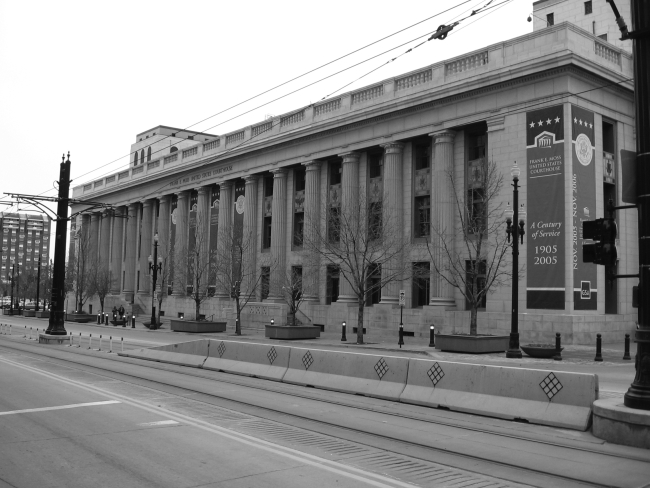Historic Frank E. Moss Federal Courthouse Undergoes Groundbreaking Renovation
Salt Lake City welcomed Robin Carnahan, the U.S. General Services Administration (GSA) administrator, who visited to witness the ongoing renovations at Utah’s Frank E. Moss Federal Courthouse. The GSA oversees this transformative project, managing numerous federal properties and procurement.
The 120-year-old courthouse, situated prominently at the intersection of Main Street and 400 South in downtown Salt Lake City, has stood largely vacant since 2014 when a modern glass and steel replacement was completed nearby. Carnahan emphasized the significance of the $50 million renovation, highlighting its potential to pay for itself through enhanced energy efficiency while accommodating several regional federal agencies that currently lease private space.
Recognizing the cultural significance of the historic structure, Carnahan stressed the importance of preserving its legacy. Despite weathered exteriors and diminished interiors over the years, the courthouse retains its original architectural ambition, awaiting a restoration that will recapture its former grandeur.
Renowned designer Tim Gaidis, overseeing the complex renovation, described the project as the most intricate endeavor of his esteemed 35-year career, affectionately dubbing it the "one-eyed teddy bear that you love."
Carnahan's visit aligns with the Biden Administration's "Investing in America" agenda, emphasizing climate-friendly initiatives constructed with American-sourced materials. The Moss courthouse renovation stands as a pioneering example, demonstrating how historic buildings can be revitalized for a sustainable future.
The Moss Federal Courthouse, initially completed in 1905, is undergoing a comprehensive makeover intended to set a national precedent for sustainable historic preservation. The neoclassical landmark, Utah's first and only federal courthouse for over a century, has been undergoing extensive refurbishment, including seismic reinforcements to integrate the original structure with subsequent additions in 1912 and 1932. Additionally, the renovation will introduce new skylights to reduce reliance on electric lighting during daylight hours.
Utilizing innovative technology such as a "chilled beam" system for heating and cooling, the courthouse aims to achieve net-zero energy consumption, drawing power from carbon-free sources to combat climate change. This milestone will be reached once Salt Lake City and surrounding communities secure sufficient clean energy sources, which is anticipated within the next few years.
Upon its reopening, the Moss courthouse will continue to serve as a vital legal hub, housing two courtrooms for the U.S. Bankruptcy Court and accommodating ten federal tenants, including agencies such as U.S. Citizen and Immigration Services, the U.S. Department of Labor's Wage and Hour Division, the National Park Service, and the U.S. Marshals Service.
Moreover, the courthouse's commitment to climate efficiency extends to its construction materials, all of which are domestically sourced as part of a broader federal initiative to promote domestic manufacturing. From low-carbon concrete supplied by local Utah companies to net-zero emissions carpeting, every aspect of the renovation underscores a sustainable vision for the future of federal infrastructure nationwide.
Carnahan's visit serves as a testament to the transformative potential of federal projects aligned with President Biden's clean energy agenda. By creating clean energy jobs, reducing energy costs, and mitigating climate impact, initiatives like the Moss courthouse renovation exemplify a forward-thinking approach to building a greener, more sustainable future for generations to come.

